Around our Catholic Schools

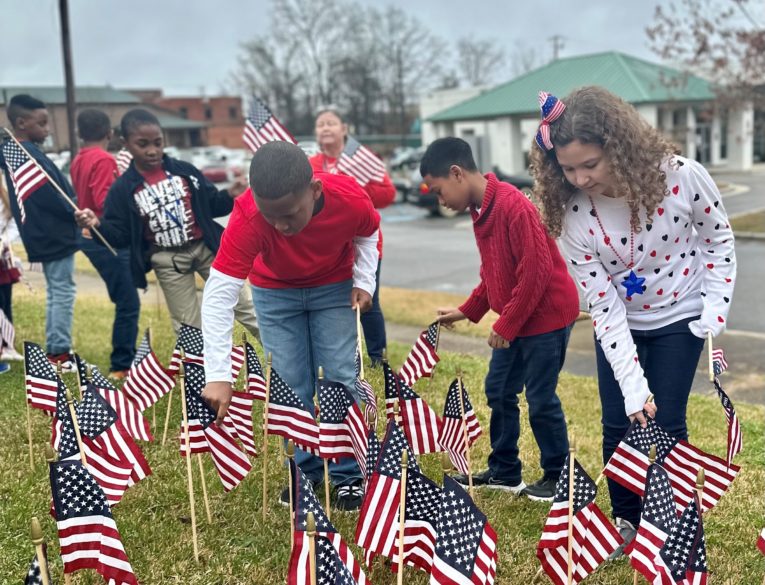

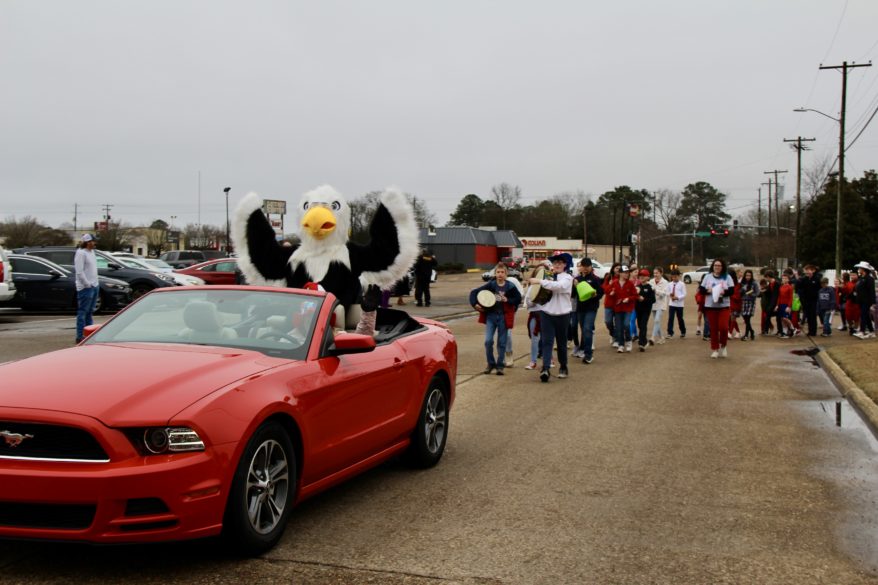
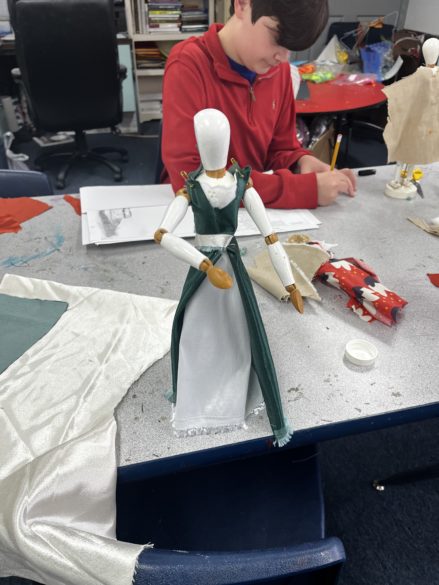
COLUMBUS – Annunciation students follow Ace the Eagle during their “Celebrating our Nation Day” parade. Annunciation seventh grader, Hayden Torres works on renaissance models in art class. (Photos by Logan Waggoner)



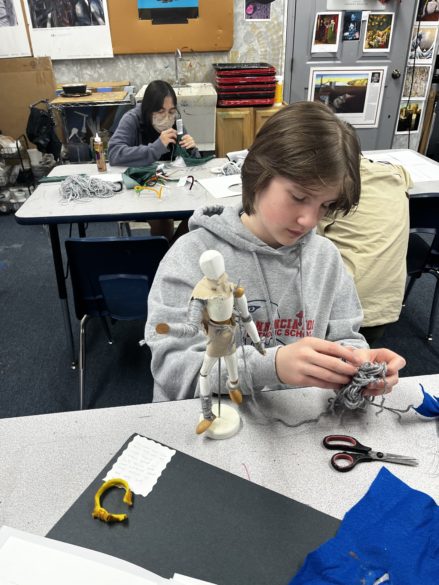
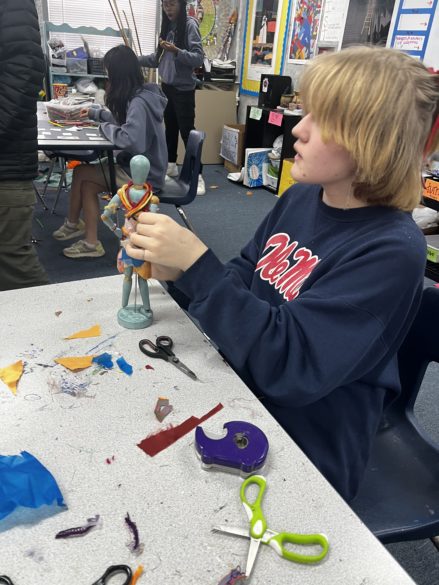









COLUMBUS – Annunciation students follow Ace the Eagle during their “Celebrating our Nation Day” parade. Annunciation seventh grader, Hayden Torres works on renaissance models in art class. (Photos by Logan Waggoner)









Schedules subject to change. Some meals may have cost associated.
LENTEN MEALS AND STATIONS
ABERDEEN St. Francis, Lenten meal of soup and bread after Stations at 6 p.m. on March 24.
BATESVILLE St. Mary, Knights of Columbus Fish Fry on March 31 from 5-7 p.m. Cost $12/plate.
BROOKHAVEN St. Francis, Stations every Friday during Lent at 5:30 p.m. followed by a light meal.
CANTON Sacred Heart, Stations every Friday at 5:30 p.m. followed by a soup supper in the parish center (no charge). All are welcome!
CLARKSDALE St. Elizabeth, Lenten lunch and reflection on Fridays during Lent from 12-1 p.m. in McKenna Hall.
CLEVELAND Our Lady of Victories, Parish potluck after Stations at 5:30 p.m. on March 17. Meat available due to dispensation by Bishop Kopacz for St. Patrick’s feast day.
COLUMBUS Annunciation, Fish Fry in the Activity Center, after Stations every Friday during Lent at 5:30 p.m. in the chapel.
FLOWOOD St. Paul, Knights of Columbus Fish dinner every Friday after Stations at 6 p.m. Donations accepted. All are welcome. On March 17, Knights will serve corned beef, cabbage and potatoes with dispensation granted by Bishop Kopacz.
GLUCKSTADT St. Joseph, Lenten dinner/Fish Fry on March 31 beginning at 5:30 p.m. Stations every Friday at 6 p.m. Cost: $10 per plate. Includes three strips of catfish, coleslaw, fries, hushpuppies, tea or water. Dine-in or carry out. Grilled cheese sandwiches with fries for $3.
GREENVILLE St. Joseph, Knights of Columbus Fish Fry, Friday, March 31 in the parish life center from 5-7 p.m. Cost is $15 per plate.
GREENWOOD Immaculate Heart of Mary, Knights of Columbus Fish Fry, every Friday during Lent from 5-7 p.m. Cost is $12 per plate. Dine in or carry out.
HERNANDO Holy Spirit, Soup Supper after Stations on Fridays at 6:30 p.m.
Holy Spirit, Men’s Association Fish Fry on March 31 beginning at 4 p.m. – eat in or takeout.
JACKSON St. Peter Cathedral, Stations at 5:15 every Friday in Lent (except March 10 at 6 p.m.), followed by simple, meat-free meal in the parish center. Spanish stations at 7 p.m.
JACKSON St. Richard, Stations at 5:30 p.m. on Fridays during Lent with Knights of Columbus Fish Fry in Foley Hall following. Dine-in or carry out. Cost: $12 adults; $6 children; $40 families of 5+ members.
MADISON St. Francis, Rosary 6 p.m., Stations 6:30 p.m. and Lenten meal 7 p.m. every Friday during Lent.
MERIDIAN St. Joseph, Stations at 6 p.m. on March 17 and 31, followed by fish fry in Kehrer Hall. Plates $10 each.
NATCHEZ St. Mary Basilica, Knights of Columbus Fish Fry, every Friday of Lent, beginning Feb. 24 from 5-7 p.m. in the Family Life Center. No fish fry on March 17 due to St. Patrick parade. Cost: Catfish $12; Shrimp $12; Combo $14. Dinners include fries, hush puppies and coleslaw. For grilled fish, call 30 minutes ahead. Details: Darren (601) 597-2890.
OLIVE BRANCH Queen of Peace, Soup Suppers at 5:30 p.m. March 10, 24 and 31; Knights of Columbus Fish Fry fundraiser on Friday, March 17.
OXFORD St. John, Stations in Church at 5 p.m. and Knights of Columbus Fish Fry at 5:30 in parish hall. Dine-in or take-out. Cost $10, plate includes fish, fries, hushpuppies, slaw and a drink.
PEARL St. Jude, Fish Fry following Stations every Friday at 6 p.m. Reservations required. Dinner includes catfish, fries, hushpuppies, coleslaw and tea. Dine-in only. No cost, donations encouraged. Details: church office (601) 939-3181.
STARKVILLE St. Joseph, Knights of Columbus catfish dinner after Stations in the Church at 5:30 p.m. every Friday during Lent.
SOUTHAVEN Christ the King, Fish Fry at 5:30 p.m. and Stations at 7 p.m. on March 17 and 31. Lenten meal served on March 10 and 24. Potluck meal at 5:30 p.m. on March 31. Seder meal on Monday, April 3 at 6:30 p.m.
TUPELO St. James, Lenten Pasta Dinners, Friday March 31 at 5:30 p.m. in Shelton Hall. Dine-in or carry-out. Meatless spaghetti (choice of red or white sauce), salad, garlic bread and dessert. Cost: adults $9; kids $6.
VICKSBURG Knights of Columbus Fish Fry every Friday during Lent.
YAZOO CITY St. Mary, Stations and Soup, Tuesdays during Lent at 5:30 p.m.

PENANCE/RECONCILIATION SERVICES
BATESVILLE St. Mary, Penance service, Thursday, March 23 from 5:30-7 p.m. Youth Penance service, Saturday, March 25 at 1 p.m.
CLARKSDALE St. Elizabeth, Reconciliation with several priests available, Thursday, March 30 from 5-7 p.m.
CLEVELAND Our Lady of Victories, Reconciliation with several priests available, Wednesday, March 22 from 4-6:30 p.m. Fr. Bowlds will hear confessions beginning at 4 p.m. with three other priests joining at 5 p.m.
COLUMBUS Annunciation, Penance Service, Thursday, March 23 at 6 p.m.
FLOWOOD St. Paul, Penance Service, Monday, March 27 at 6 p.m.
GREENVILLE Sacred Heart, Penance Service and Individual Confessions, Wednesday, March 29 at 6 p.m.
GRENADA St. Peter, Penance Service, Wednesday, March 22 at 6:15 p.m.
JACKSON St. Richard, Reconciliation with four priests available, Thursday, March 23 from 6-8 p.m.
MAGEE St. Stephen, Penance Service, Saturday, April 1 at 4 p.m.
OXFORD St. John, Penance Service, Monday, March 27 from 5-6:30 p.m.
RIPLEY St. Matthew, Lenten opportunity for Reconciliation/Confession, Friday, March 24 at 6:30 p.m. with Father Cesar Sanchez or Thursday, March 30 at 6:30 p.m. with Father Mario Solorzano.
SHAW St. Francis, Penance Service and Individual Confessions, Monday, March 27 at 6 p.m.
SOUTHAVEN Christ the King, Penance Service, Wednesday, March 22 at 7 p.m.
STARKVILLE St. Joseph, Penance Service, Tuesday, March 28 at 6 p.m.
TUPELO St. James, Reconciliation Service, Thursday, March 30 from 5-7 p.m. in the Church.
YAZOO CITY St. Mary, Penance Service, Monday, March 20 at 6 p.m. Confession also available in Spanish.
VICKSBURG St. Michael, Reconciliation Service, Tuesday, March 21 at 7 p.m.
STATIONS ONLY
BATESVILLE St. Mary, Stations, 30 minutes before all weekend Masses and on Fridays before 11 a.m. Mass.
CANTON Holy Child Jesus, Stations at 12 p.m. on Fridays during Lent.
CHOCTAW St. Therese, Stations on Fridays during Lent at 6 p.m.
CLARKSDALE St. Elizabeth, Stations on Fridays during Lent at 2:30 p.m. (with school students) and 5:30 p.m. rotating between St. Elizabeth and Immaculate Conception.
CLEVELAND Our Lady of Victories, Stations every Friday during Lent at 5:30 p.m.
CLINTON Holy Savior, Stations every Friday during Lent at 5:30 p.m. followed by Mass.
FOREST St. Michael, Way of the Cross in Spanish at 7 p.m. on Fridays during Lent.
GLUCKSTADT St. Joseph, Stations on Fridays at 6 p.m. during Lent.
GREENVILLE Sacred Heart, Stations, Friday, March 24 at 6 p.m.
GREENWOOD Immaculate Heart of Mary, Stations at 12 p.m. on Fridays during Lent.
GREENWOOD St. Francis, Stations at 6 p.m. on Fridays during Lent.
GRENADA St. Peter, Stations at 6:15 p.m. on Fridays during Lent.
JACKSON Christ the King, Stations at 6 p.m. every Friday during Lent. Rosary after Stations.
JACKSON Holy Ghost, Stations at 4 p.m. every Friday during Lent.
MADISON St. Francis, Live Way of the Cross, Good Friday, April 7 at 2 p.m.
MAGEE St. Stephen, Way of the Cross, Wednesdays at 5 p.m. Bible study to follow in parish hall.
MAGNOLIA St. James, Stations at 5 p.m. every Friday during Lent.
MCCOMB St. Alphonsus, Stations at 6 p.m. every Friday during Lent.
MERIDIAN St. Patrick, Stations, March 24 at 2 p.m. and 6 p.m.; March 31 at 2 p.m. and outdoor Stations led by Hispanic community on April 7 at 5 p.m.
NATCHEZ St. Mary Basilica, Stations every Friday during Lent beginning March 3 at 5:15 p.m. No Stations on March 17, will have Mass at 5 p.m.
Assumption, Stations every Friday during Lent at 5:30 p.m.
NEW ALBANY St. Francis, Mass followed by Stations, every Friday during Lent at 8:30 a.m. (English)
OLIVE BRANCH Queen of Peace, Stations every Friday during Lent at 7 p.m.
PHILADELPHIA Holy Rosary, Stations on Fridays during Lent at 6 p.m.
PONTOTOC St. Christopher, Stations at 6 p.m. each Friday during Lent.
RAYMOND Immaculate Conception, Stations at 6 p.m. every Friday during Lent.
RIPLEY St. Matthew, Stations at 4:30 p.m. (English) every Friday during Lent; Way of the Cross (Spanish) at 6:45 p.m.
ROBINSONVILLE Good Shepherd, Stations on Wednesdays during Lent at 2 p.m.
SHAW St. Francis, Stations every Friday after 6 p.m. Mass.
SOUTHAVEN Christ the King, Stations every Friday during Lent at 7 p.m. Good Friday there will be a live outdoor Stations at 3 p.m.
TUPELO St. James, Stations on Fridays following 12:10 p.m. Mass (English) and at 6 p.m. (English). Spanish stations following 6:30 p.m. Spanish Mass.
VICKSBURG St. Mary, Stations every Friday during Lent at 6 p.m.
VICKSBURG St. Michael, Stations every Friday during Lent at 5:30 p.m.
VICKSBURG St. Paul, Stations every Friday during Lent at 5:30 p.m.
SPECIAL LENTEN NOTICE
Abstinence: Catholics abstain from eating meat on Ash Wednesday (Feb. 22, 2023) and Good Friday; and also on Fridays during Lent; however, Bishop Joseph Kopacz has granted a dispensation from the requirement of abstaining from meat on Friday, March 17, 2023 in honor of the Feast of St. Patrick, as on this feast day various cultural dishes with meat are traditionally served. The dispensation is granted with the condition that those who take advantage of the dispensation will substitute another profound act of penance, such as prayer and alms giving to mark this day. Norms concerning abstinence from meat are binding on Catholics from age 14 onwards.
Fasting: Catholics fast (eating one full meal, as well as two smaller meals that together are not equal to a full meal) on Ash Wednesday (Feb. 22) and Good Friday (April 7). Catholics 18-59 years old are bound by this obligation.
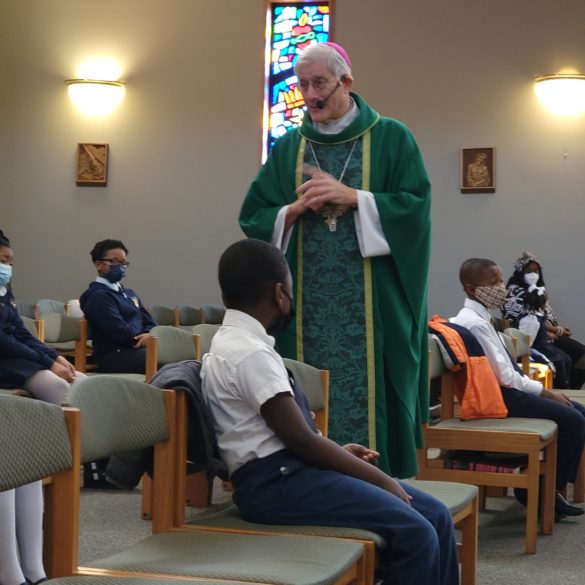
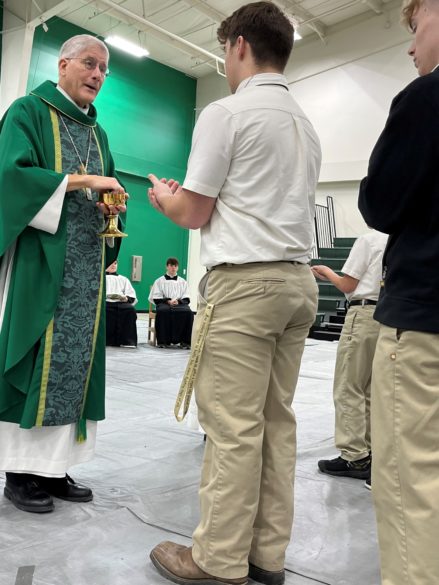
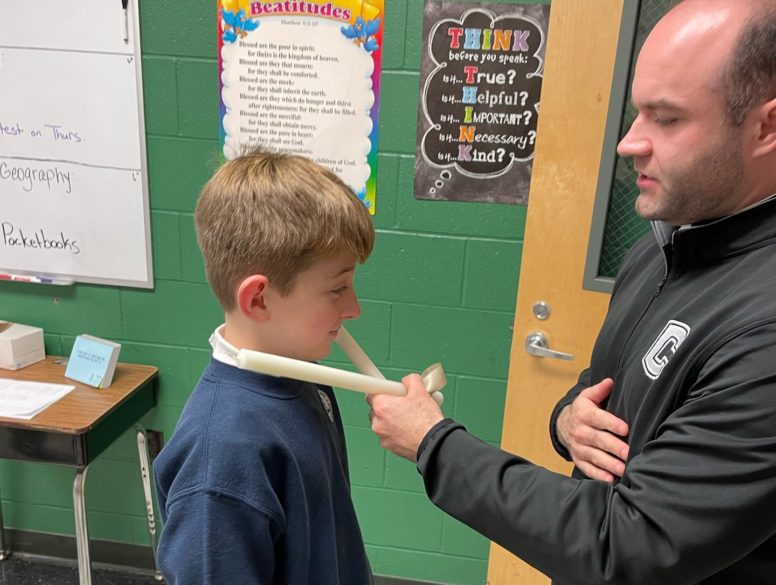
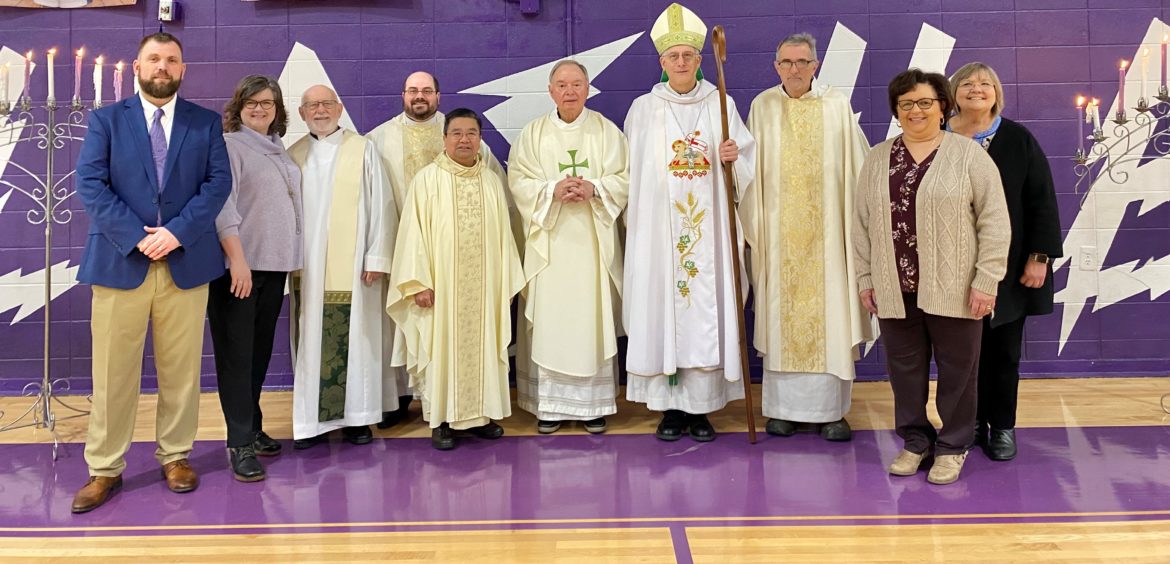
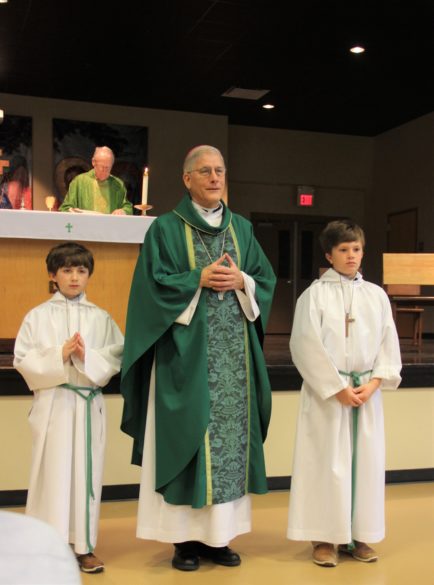
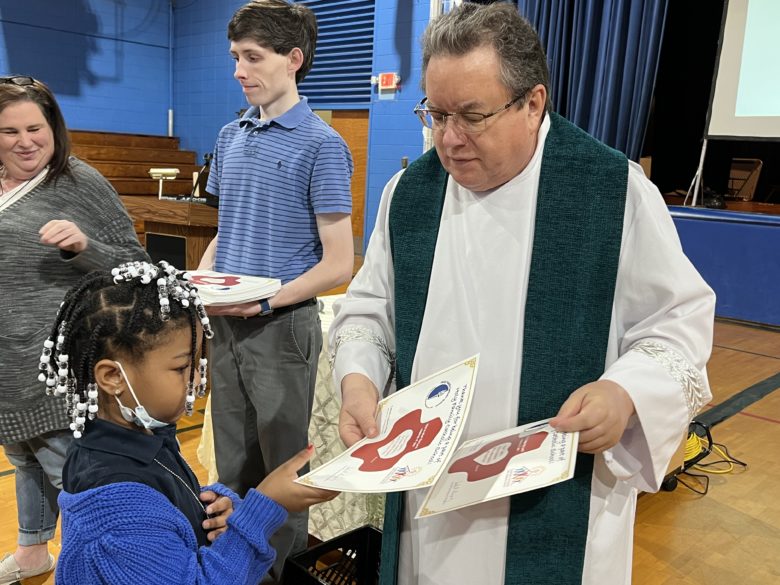
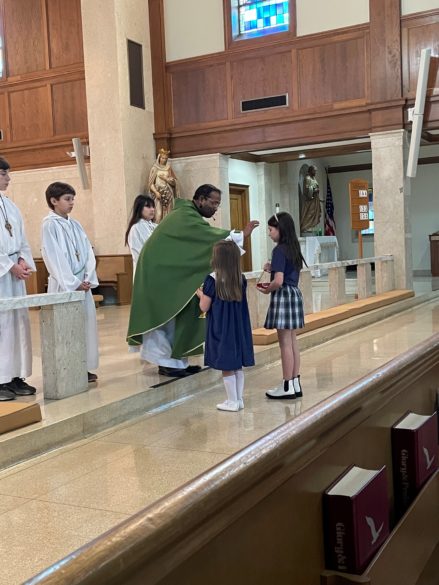




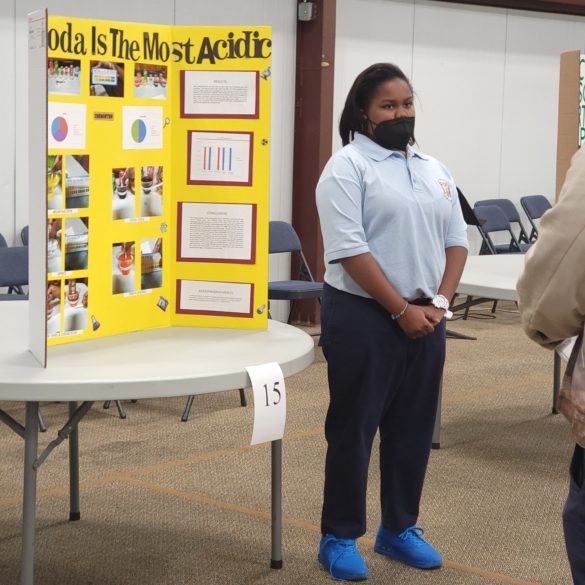

JACKSON – Sister Thea Bowman School sixth grader, Bailey Thiac presents her science fair project to the judges. (On right) Sixth grader, Ashleigh Mason explains her science fair project to the panel of judges. (Photos by Christopher Payne)
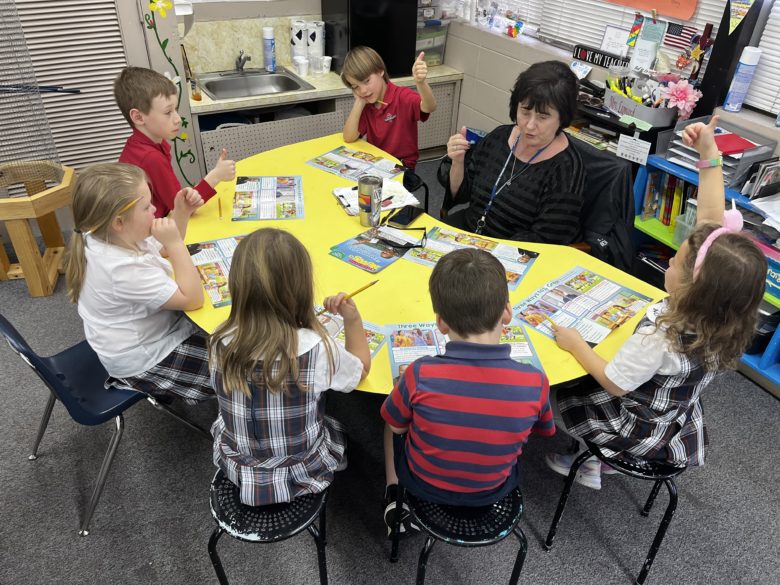
By Joanna Puddister King
JACKSON – As the Diocese of Jackson kicks off the 2023 Catholic Service Appeal (CSA), director of Stewardship and Development, Rebecca Harris shared her thanks for the Synod process over the last year.
“As a diocese, we listened and heard the voices of the people calling for more programs for youth and young adults, more faith formation for adults and opportunities for healing,” said Harris.
“I’m pleased that the CSA can be a part of aiding ministries grow and flourish in our church in these ways.”
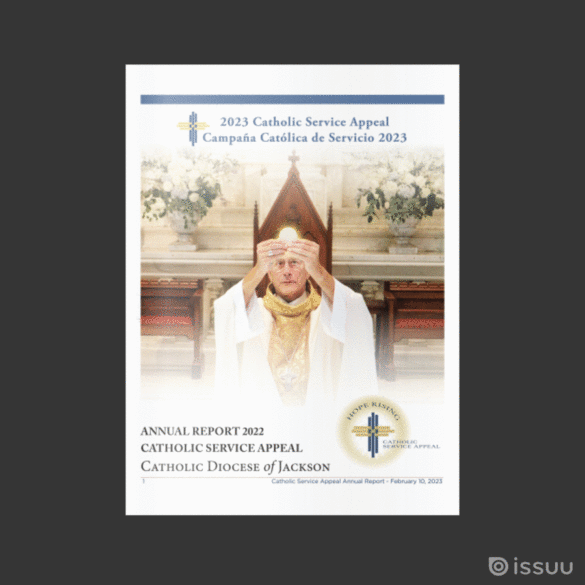
In the fall of 2022, the diocese began an office for young adult and campus ministry as a response to the call for more opportunities for young adults. This year, the CSA is able to assist this office with funds raised through the appeal to help young adults continue to grow in their faith beyond college.
Each year in January Bishop Joseph Kopacz sends letters to all parishioners in the diocese asking for support of ministries that are vital to the Catholic faith.
“When you make a gift you become the ‘Hope Rising’ to those served by the appeal,” Harris says.
The Catholic community can become the hope to those served by these ministries: Seminarian Education, Catholic Schools, Retired Priests, Clergy Assistance, Permanent Diaconate Ministry, Catholic Charities, Campus Ministry, Formation Ministry and Religious Education, Intercultural Ministry, Evangelization and Communication, Family Ministry, Young Adult Ministry, Youth Ministry and grants for Parishes and Schools.
For detailed information on each of these ministries supporters can visit website csa.jacksondiocese.org.
Harris says that supporters will also find stories from people who have been supported by the Catholic Service Appeal.
“This year, we are featuring stories that show a small piece of how donations to the CSA make huge impacts.”
Supporters can click on the “Voices” page to see how donations supported Izzy from the Catholic Charities Unaccompanied Refugee Minor program; or learn how Catholic Charities Born Free program supported Jada to deliver a healthy baby boy free of drugs. Site visitors can also read how the vocations ministry supported Deacon Carlisle Beggerly as he answered the call of God; and discover how Eduardo Padilla reached deep into his faith and became a leader at his parish. And lastly, read how youth ministry supports youth like Emerson Erwin of St. Joseph Gluckstadt to attend retreats like SEARCH.
“Your prayers and generosity always make a difference,” says Bishop Joseph Kopacz.
There are several ways to give to the 2023 Catholic Service Appeal. Pledge cards can be mailed to PO Box 22723; Jackson, MS 39225; and supporters can visit csa.jacksondiocese.org to donate online.
Gifts of stocks can also be made to support the Catholic Service Appeal. For more information on the CSA, contact Rebecca Harris at (601) 960-8477.
(Editor’s note: See the special Catholic Service Appeal insert in this edition of Mississippi Catholic to learn more about all the ministries supported by this appeal.)
COLUMBUS
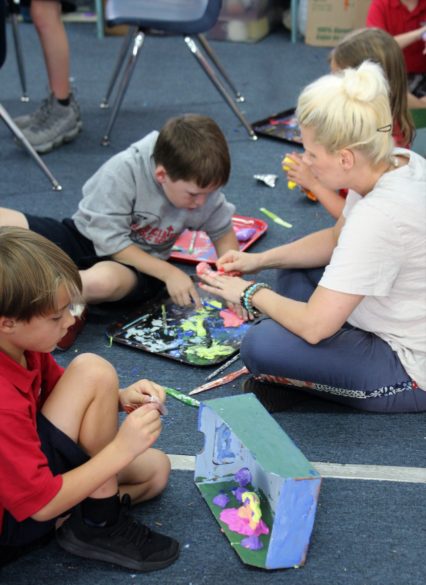
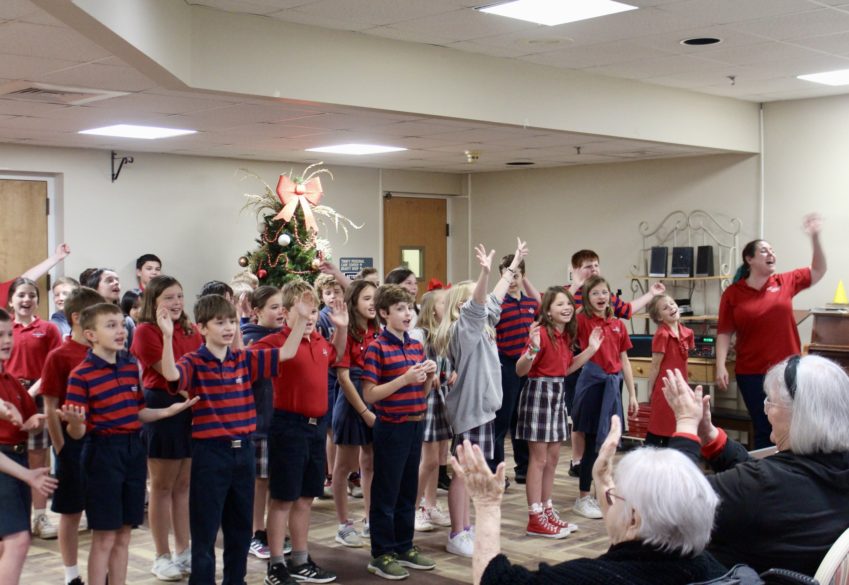



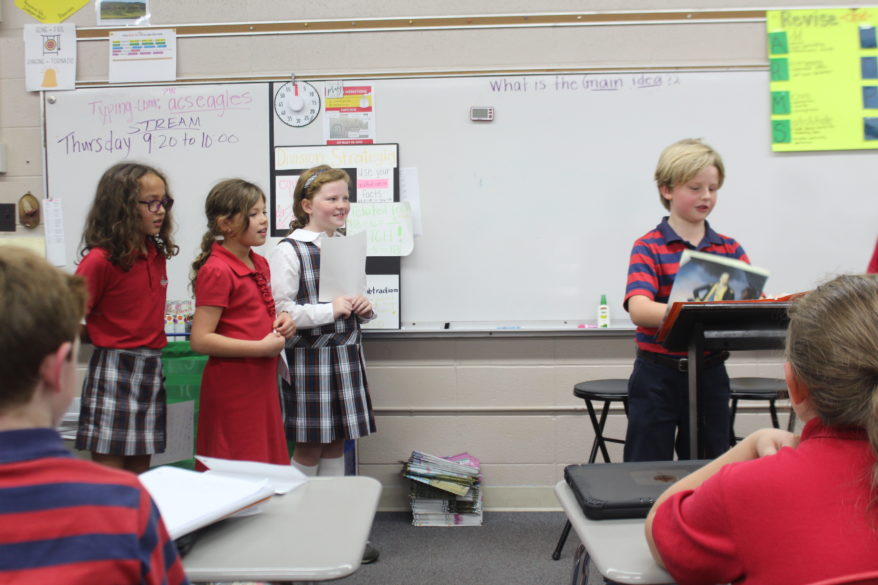
VICKSBURG


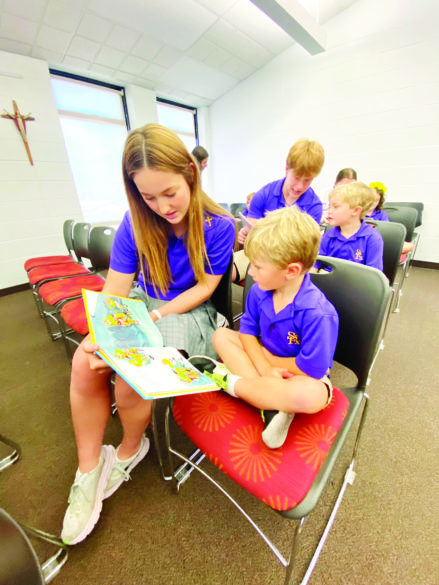
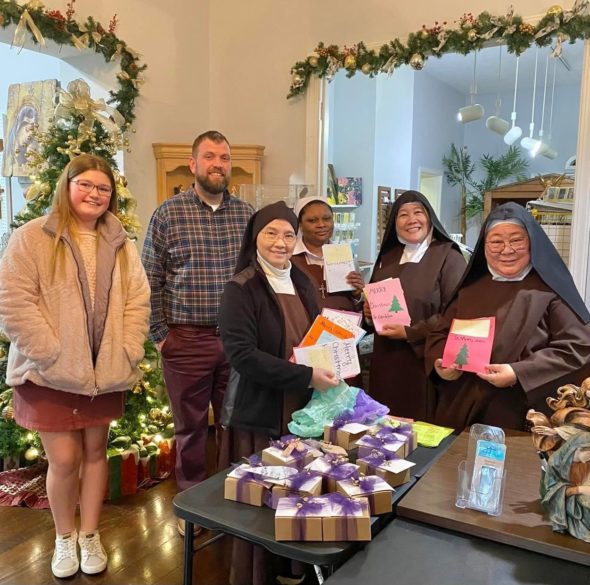
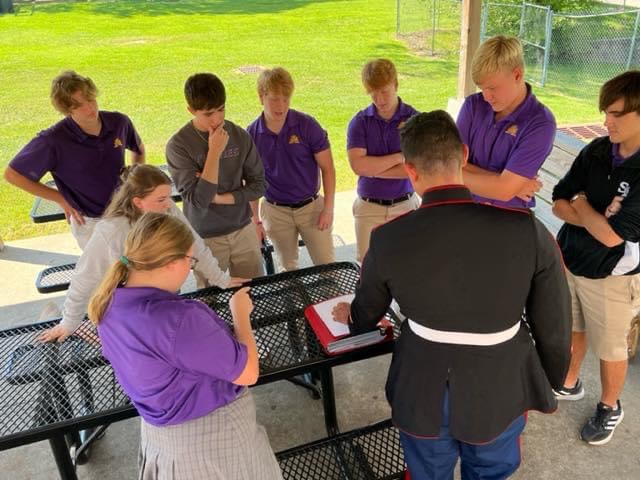

MADISON
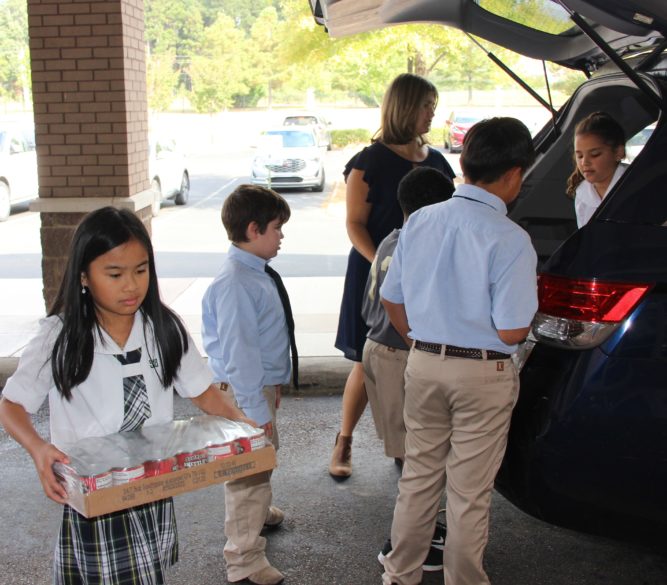
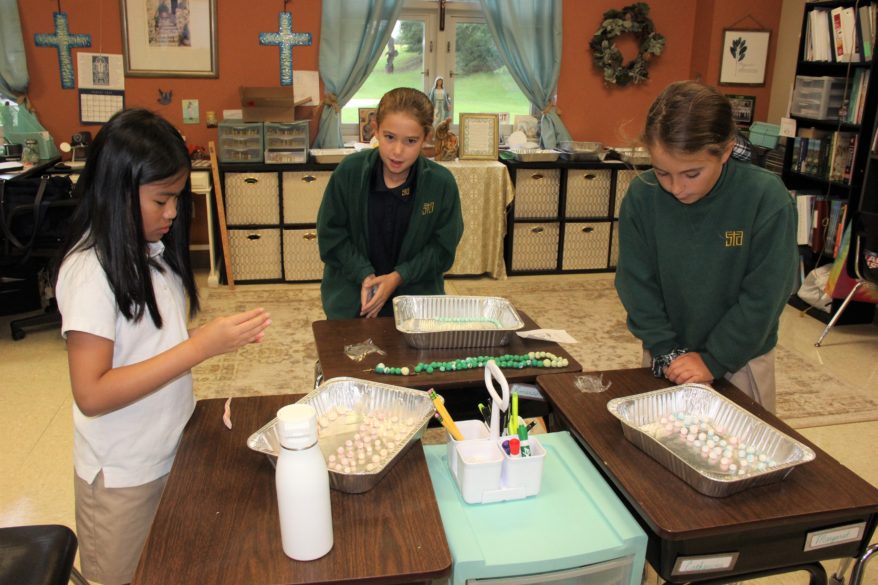

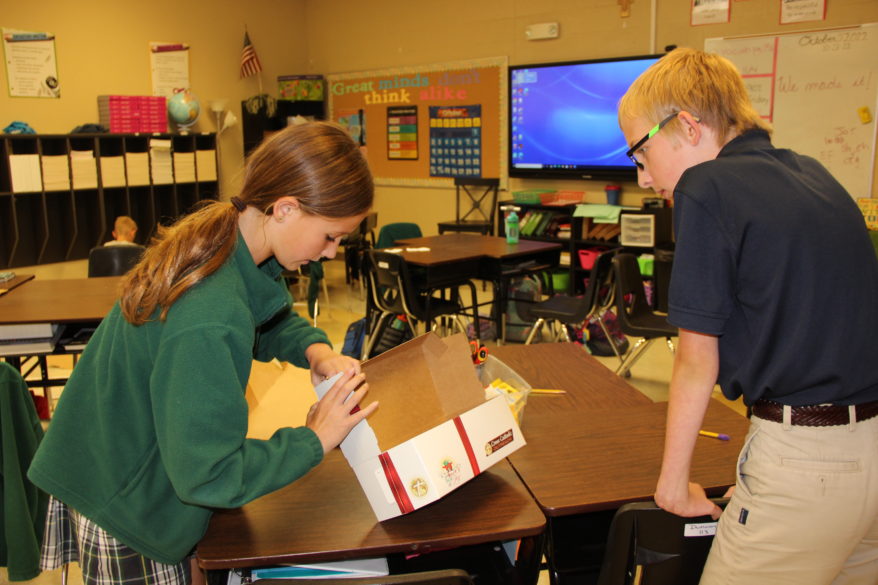
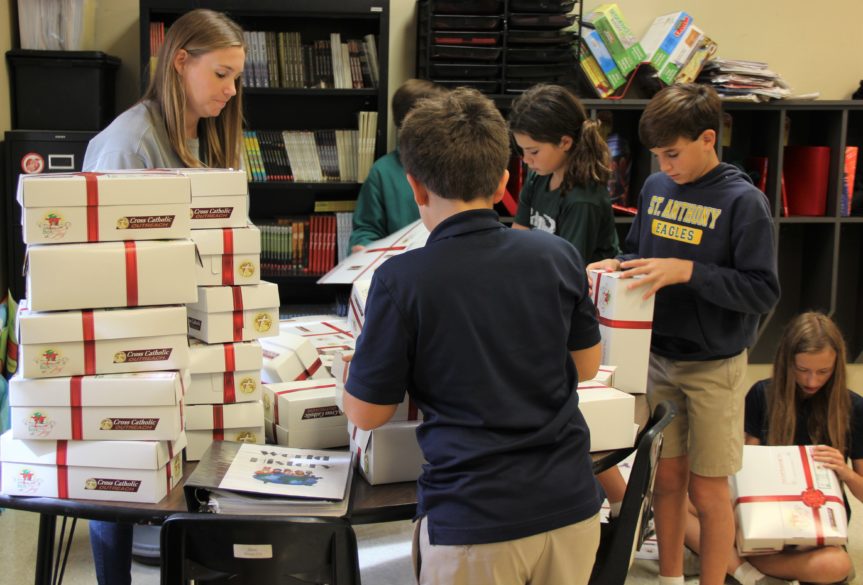

CLARKSDALE
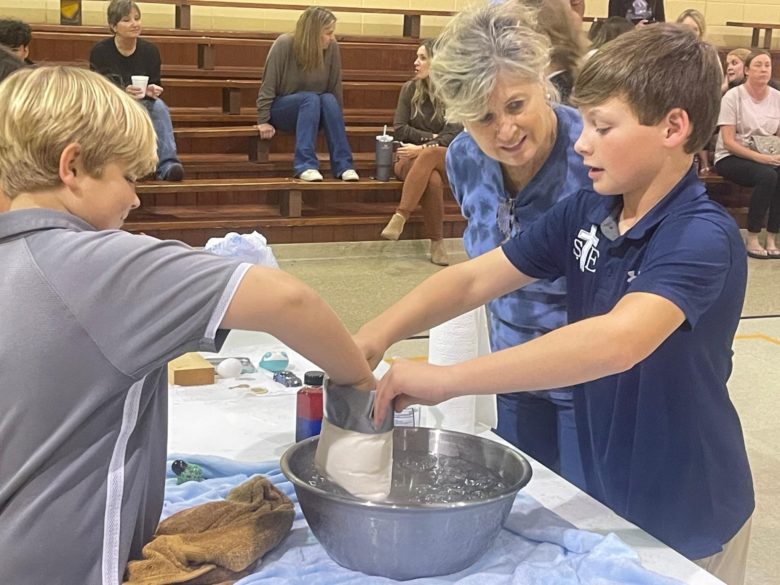
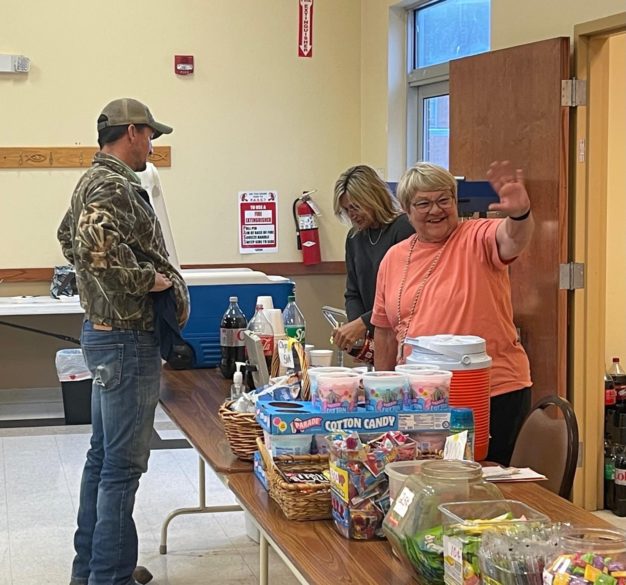

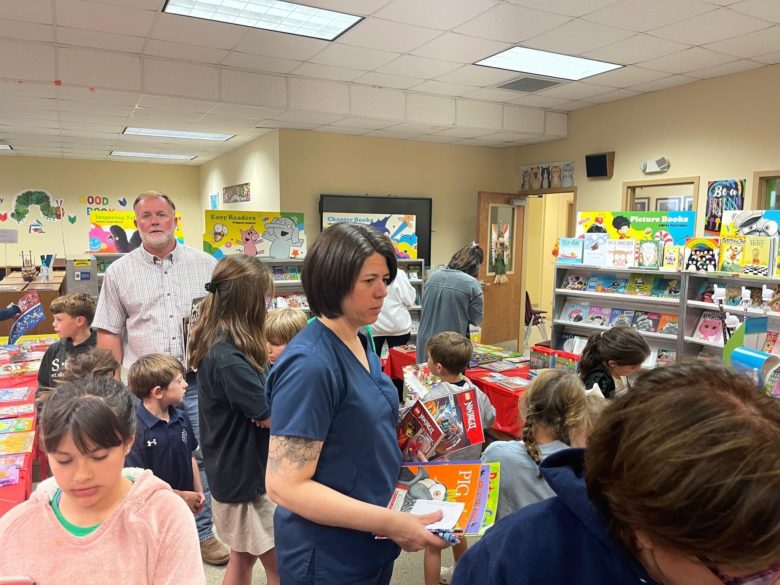
MADISON
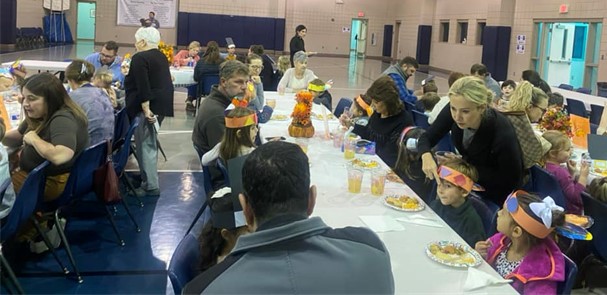
SOUTHAVEN

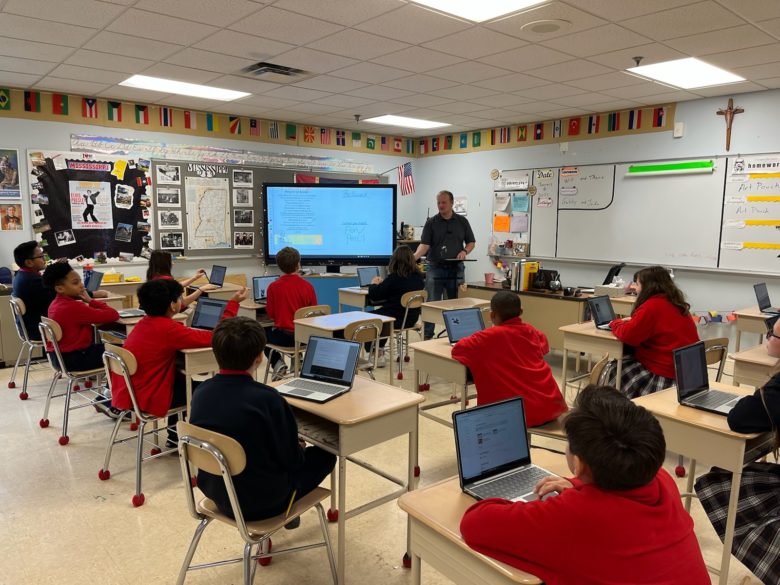

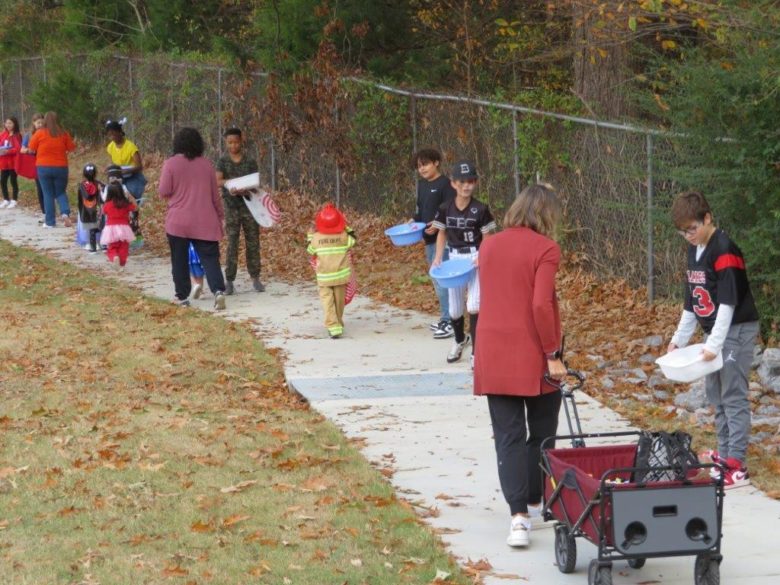
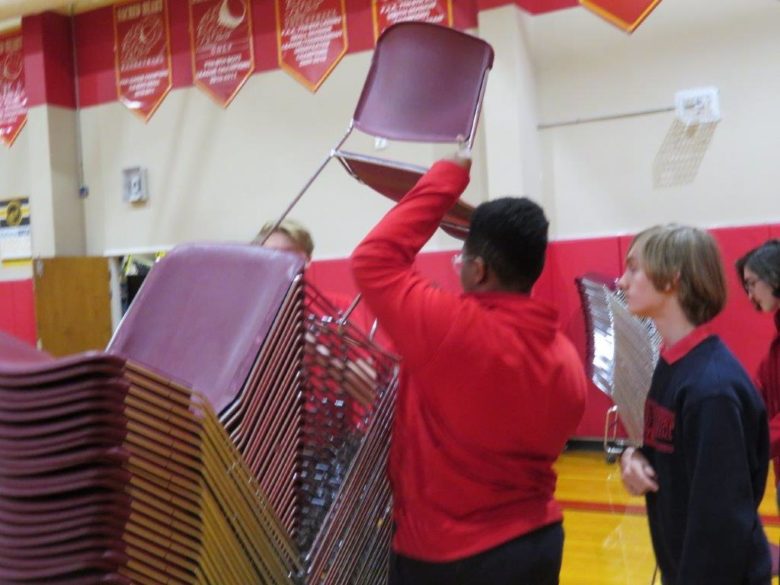
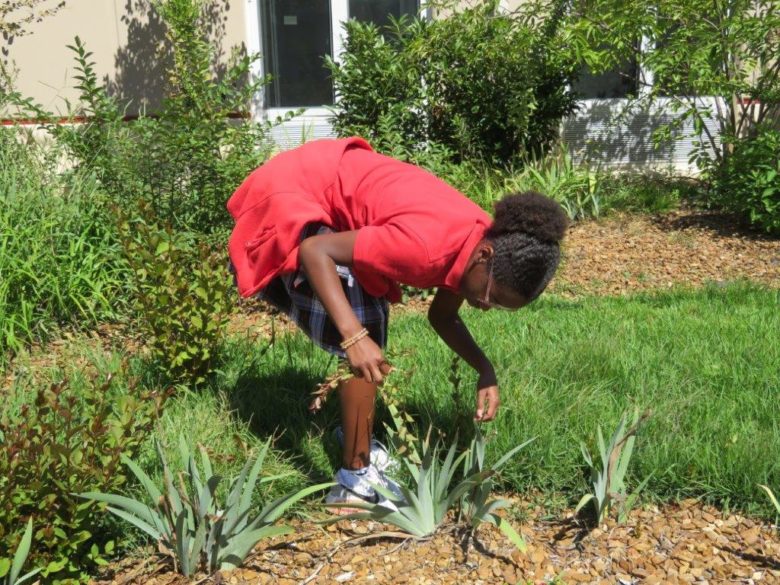
JACKSON

NATCHEZ
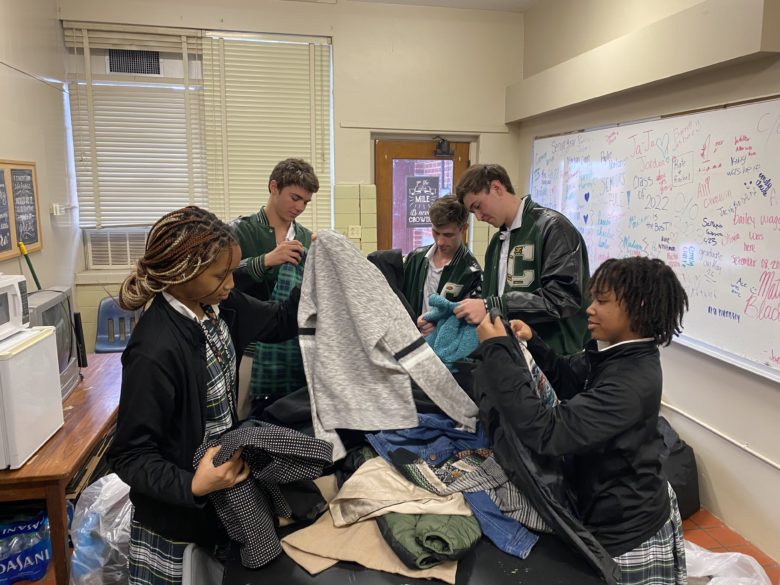

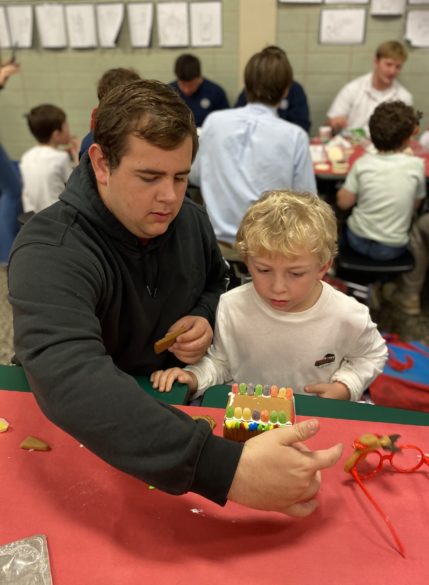

MERIDIAN



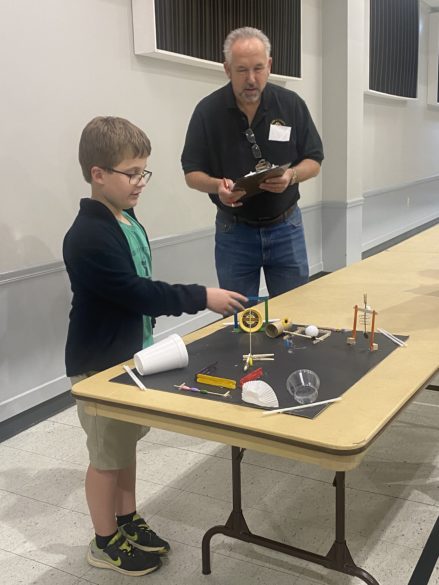
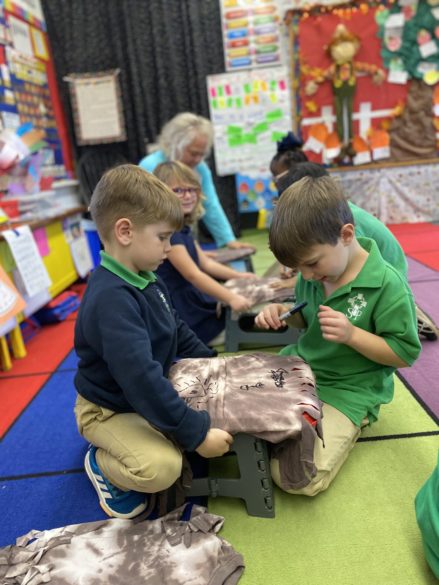


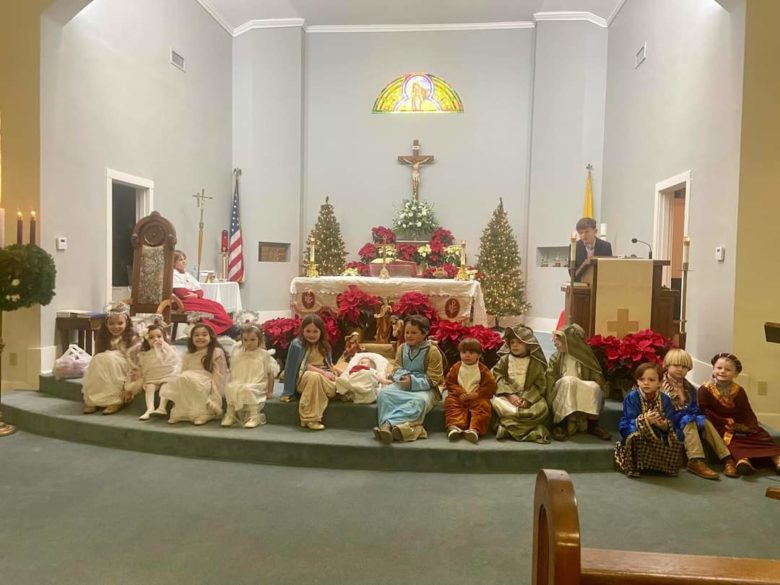
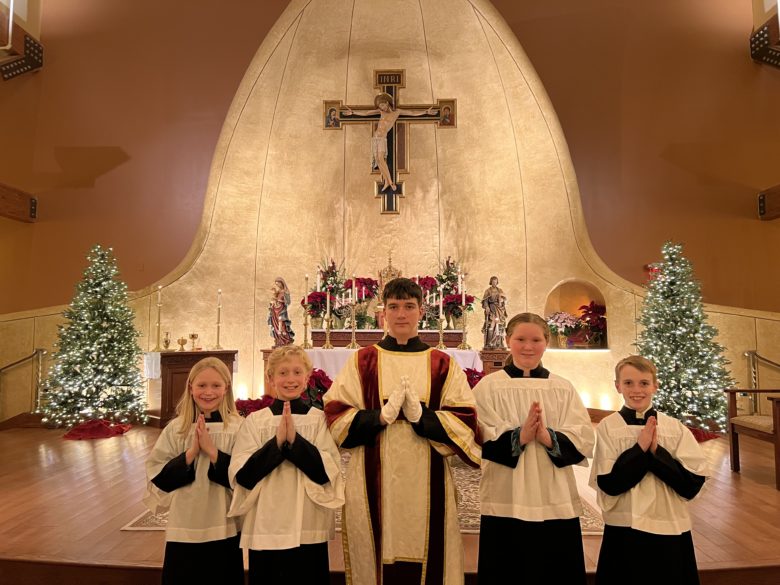
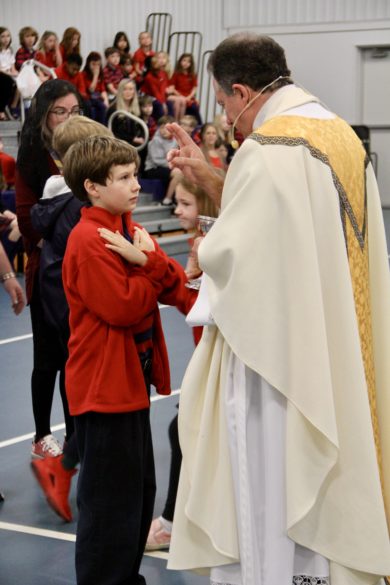


By Carol Glatz
VATICAN CITY (CNS) – Pope Benedict XVI “spread and testified to” the Gospel his entire life, Pope Francis told tens of thousands of people gathered Jan. 5 for his predecessor’s funeral Mass.
“Like the women at the tomb, we too have come with the fragrance of gratitude and the balm of hope, in order to show him once more the love that is undying. We want to do this with the same wisdom, tenderness and devotion that he bestowed upon us over the years,” Pope Francis said in his homily.
The Mass in St. Peter’s Square was the first time in more than 200 years that a pope celebrated the funeral of his predecessor. Pope Pius VII had celebrated the funeral of Pius VI in 1802 when his remains were returned to Rome after he died in exile in France in 1799.
Pope Benedict, who had retired in 2013, had requested his funeral be simple; the only heads of state invited to lead delegations were those of Italy and his native Germany.
However, many dignitaries – including Queen Sofia of Spain and King Philippe of Belgium – and presidents and government ministers representing more than a dozen nations were in attendance, as were most of the ambassadors to the Holy See.
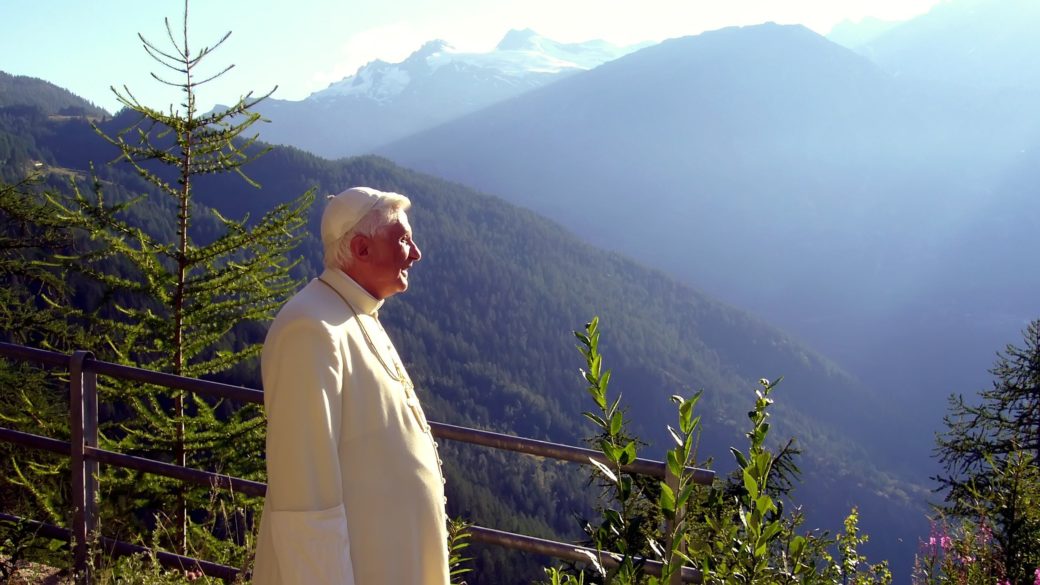
Members of the College of Cardinals sat on one side of the casket, while, on the other side, sat special guests, including the late pope’s closest collaborators and representatives of the Orthodox, Oriental Orthodox, Anglican, Protestant and U.S. evangelical communities. Jewish and Muslim organizations also sent delegations.
Pope Francis presided over the Mass and Cardinal Giovanni Battista Re, dean of the College of Cardinals, was the main celebrant at the altar. Some 120 cardinals, another 400 bishops and 3,700 priests concelebrated. The vestments and stoles were red in keeping with the color of mourning for deceased popes.
Hong Kong Cardinal Joseph Zen Ze-kiun, who turns 91 Jan. 13, was allowed to leave China to attend the funeral of Pope Benedict, who had made him a cardinal in 2006. The retired cardinal was arrested in May and fined in November together with five others on charges of failing to properly register a now-defunct fund to help anti-government protesters.
More than 1,000 journalists, photographers and camera operators from around the world were accredited to cover the funeral in St. Peter’s Square.
An estimated 50,000 people filled the square for the Mass, and a number of visitors told Catholic News Service that banners and flags were being confiscated by security upon entrance. Of the few flags and banners that did make it past security was a white cloth with “Santo Subito” (“Sainthood Now”) written in red and a “Thank you, Pope Benedict” written in light blue in German.
Just as Pope Benedict dedicated his pontificate to directing the faithful’s focus to the person of Christ, Pope Francis dedicated his homily to Christ’s loving devotion and suffering witness as the “invitation and the program of life that he quietly inspires in us,” rather than on a summary of his predecessor’s life.
Pope Francis spoke of Jesus’ grateful, prayerful and sustained devotion to God’s will and how Jesus’ final words on the cross, “Father, into your hands I commend my spirit,” summed up his entire life, “a ceaseless self-entrustment into the hands of his Father.”
“His were hands of forgiveness and compassion, healing and mercy, anointing and blessing, which led him also to entrust himself into the hands of his brothers and sisters,” he said.
“Father into your hands I commend my spirit,” the pope said, is the plan for life that Jesus quietly invites and inspires people to follow.
However, he said, the path requires sustained and prayerful devotion that is “silently shaped and refined amid the challenges and resistance that every pastor must face in trusting obedience to the Lord’s command to feed his flock.”
“Like the Master, a shepherd bears the burden of interceding and the strain of anointing his people, especially in situations where goodness must struggle to prevail and the dignity of our brothers and sisters is threatened,” said the pope.
“The Lord quietly bestows the spirit of meekness that is ready to understand, accept, hope and risk, notwithstanding any misunderstandings that might result. It is the source of an unseen and elusive fruitfulness, born of his knowing the One in whom he has placed his trust,” he said.
“Feeding means loving, and loving also means being ready to suffer. Loving means giving the sheep what is truly good, the nourishment of God’s truth, of God’s word, the nourishment of his presence,” Pope Francis said, quoting his predecessor’s homily marking the start of his pontificate April 24, 2005.
“Holding fast to the Lord’s last words and to the witness of his entire life, we too, as an ecclesial community, want to follow in his steps and to commend our brother into the hands of the Father,” he said of Pope Benedict. “May those merciful hands find his lamp alight with the oil of the Gospel that he spread and testified to for his entire life.”
“God’s faithful people, gathered here, now accompany and entrust to him the life of the one who was their pastor,” the pope said. “Together, we want to say, ‘Father, into your hands we commend his spirit.'”
“Benedict, faithful friend of the Bridegroom, may your joy be complete as you hear his voice, now and forever!” he concluded, as the crowd prayed in silence.
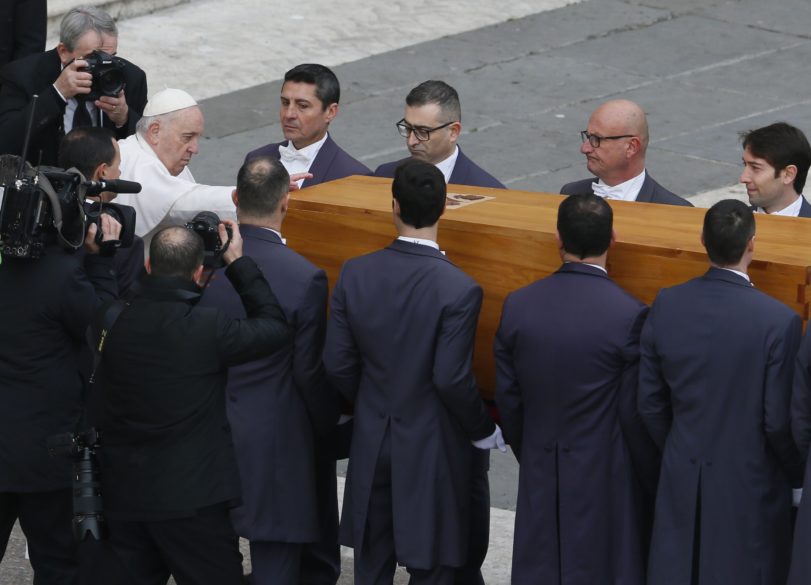
Among the people in the crowd was Georg Bruckmaier who traveled nearly 10 hours by car to come to the funeral from his home in Bavaria, not far away from where the late pope was born.
Wearing a Bavarian flag around his back, he told CNS, “There are a lot of Bavarians here today, I’ve seen people I know from university. I wanted to be here for the atmosphere.”
“People felt very close to him, because he is a Bavarian, so this is a really big event to be here,” Bruckmaier said, adding that being able to pay his last respects before the pope’s remains in St. Peter’s Basilica, “is a different thing than seeing it on television. It’s something I won’t forget in my whole life.”
Fiona-Louise Devlin told CNS she and her companions were wearing scarves from the late pope’s visit to Scotland in 2010. She said they traveled to Rome from Scotland specifically for the funeral, booking their flight the day the pope passed away.
“He’s the pope of our generation. Like, how so many people say that John Paul II was their pope, he was mine. I’ve traveled around the world to go to celebrations that he’s been a part of, so I wanted to be here for this,” she said.
As the day began, the thick morning fog obscuring the cupola slowly began to lift as 12 laymen emerged from the basilica carrying the pope’s casket. The crowd applauded as the cypress casket was brought into the square and placed before the altar.
The pope’s master of liturgical ceremonies, Msgr. Diego Giovanni Ravelli, and Archbishop Georg Gänswein, the late pope’s longtime personal secretary, together placed an opened Book of the Gospels on the casket. The simple casket was decorated with his coat of arms as archbishop of Munich and Freising, Germany, which depicts a shell, a Moor and a bear loaded with a pack on his back.
The Bible readings at the Mass were in Spanish, English and Italian, and the prayers of the faithful at the Mass were recited in German, French, Arabic, Portuguese and Italian.
The prayers included petitions for “Pope Emeritus Benedict, who has fallen asleep in the Lord: may the eternal Shepherd receive him into his kingdom of light and peace,” followed by a prayer “for our Holy Father, Pope Francis, and for all the pastors of the church: may they proclaim fearlessly, in word and deed, Christ’s victory over evil and death.”
The other prayers were for justice and peace in the world, for those suffering from poverty and other forms of need, and for those gathered at the funeral.
At the pope’s funeral, like any Catholic funeral, Communion was followed by the “final commendation and farewell,” asking that “Pope Emeritus Benedict” be delivered from death and “may sing God’s praises in the heavenly Jerusalem.”
Pope Francis prayed that God have mercy on his predecessor, who was “a fearless preacher of your word and a faithful minister of the divine mysteries.”
While the funeral was based on the model of a papal funeral, two key elements normally part of a papal funeral following the farewell prayer were missing: there were no prayers offered by representatives of the Diocese of Rome and of the Eastern Catholic churches, since those prayers are specific to the death of a reigning pope, who is bishop of the Diocese of Rome and is in communion with the leaders of the Eastern-rite churches.
A bell tolled solemnly and the assembly applauded for several minutes – with some chanting “Benedetto” – as the pallbearers carried the casket toward St. Peter’s Basilica.
Pope Francis blessed the casket and laid his right hand on it in prayer, then bowed slightly in reverence before it was taken inside for a private burial in the grotto of St. Peter’s Basilica, in the same tomb that held the remains of St. Pope John Paul II before his beatification.
The evening before the funeral Mass a small assembly of cardinals, officials of St. Peter’s Basilica and members of the late pope’s household gathered in St. Peter’s Basilica to witness Pope Benedict’s body being placed into a cypress casket and closed. The ceremony took place Jan. 4 after about 195,000 people had paid their respects to the pope over three days of public viewing.
The “rogito,” a document rolled up and placed in a tube, was placed in the casket with the body. In addition to containing his biography, the legal document, written in Latin, also attested to his death and burial. Medals and coins minted during his pontificate also were placed in the casket.
Archbishop Gänswein and Msgr. Ravelli extended a white silk cloth over the deceased pope’s face. The pope was wearing a miter and the chasuble he wore for Mass at World Youth Day in Sydney in 2008; between his clasped hands were a rosary and small crucifix.
After the funeral Mass, the pope’s casket was taken to the chapel in the crypt of St. Peter’s Basilica where he was to be buried.
Although the burial was private, images supplied by Vatican Media showed Cardinal Re leading prayers and blessing the remains during the burial rite attended by a small number of senior cardinals, the retired pope’s closest aides and others.
The cypress casket was wrapped with red ribbon, which was affixed to the wood with red wax seals, then placed inside a zinc casket soldered shut and put inside a larger casket made of oak. The tops of both the zinc and oak caskets were decorated with a simple cross, a bronze plaque with the pope’s name and dates of birth, papacy and death, and his papal coat of arms.
His tomb is located between the only two women buried in the grotto under the basilica: the 15th-century Queen Charlotte of Cyprus and the 17th-century Queen Christina of Sweden.
The burial ceremony ended before 1 p.m. but Matteo Bruni, director of the Vatican press office, said he thought the crypt would not be open to the public until Jan. 8.
(Contributing to this story was Justin McLellan at the Vatican. available to all of us through the sacraments and in loving union with one another.)
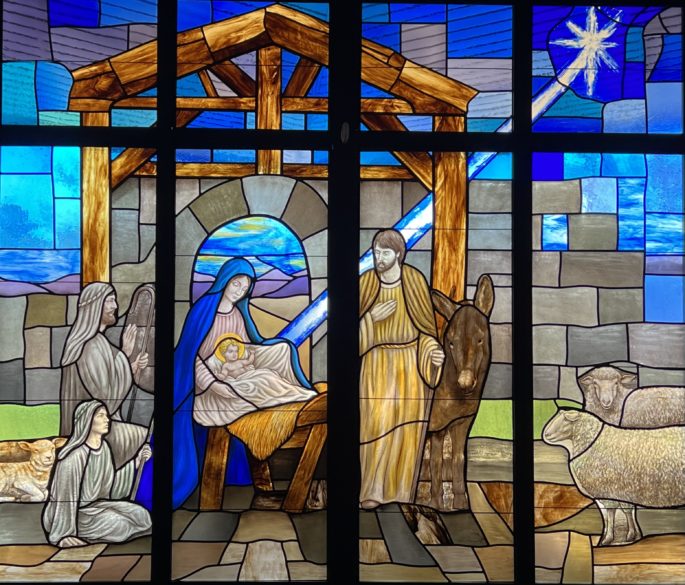
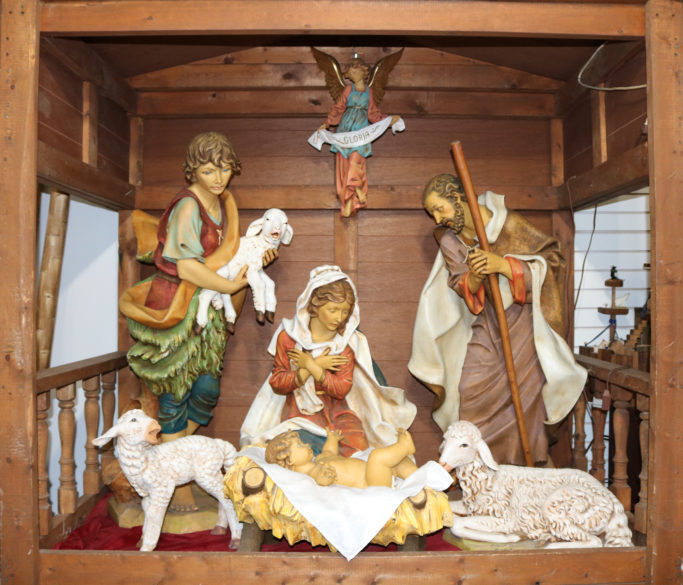
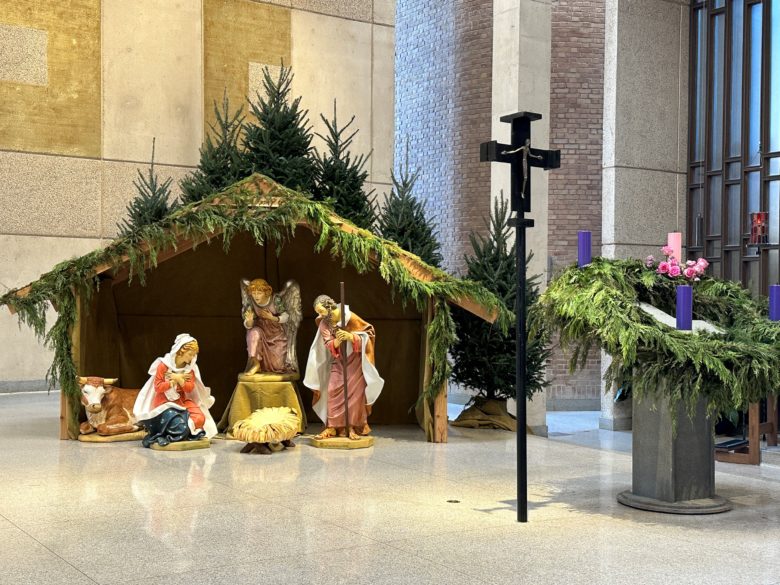
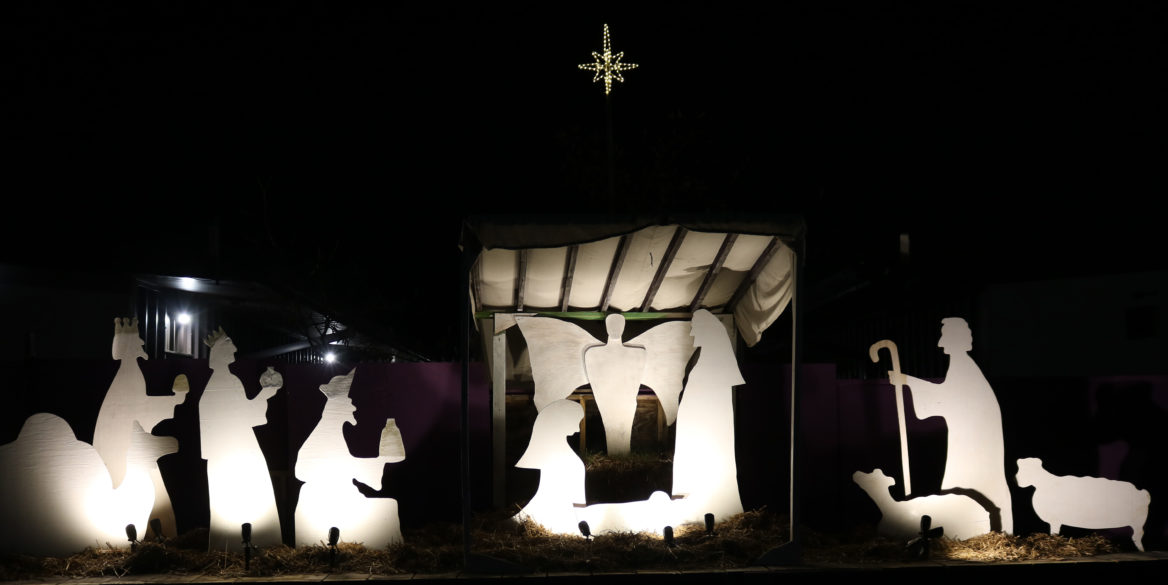

Columbus
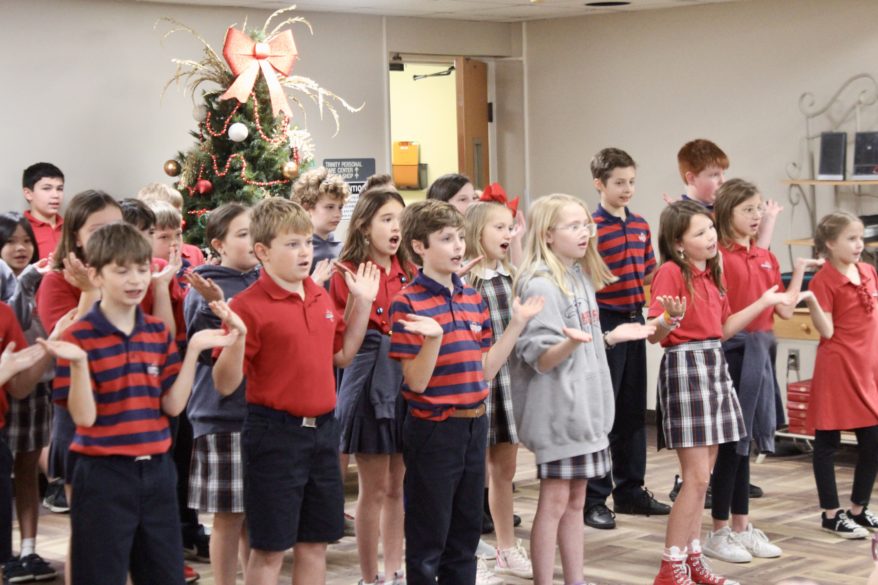
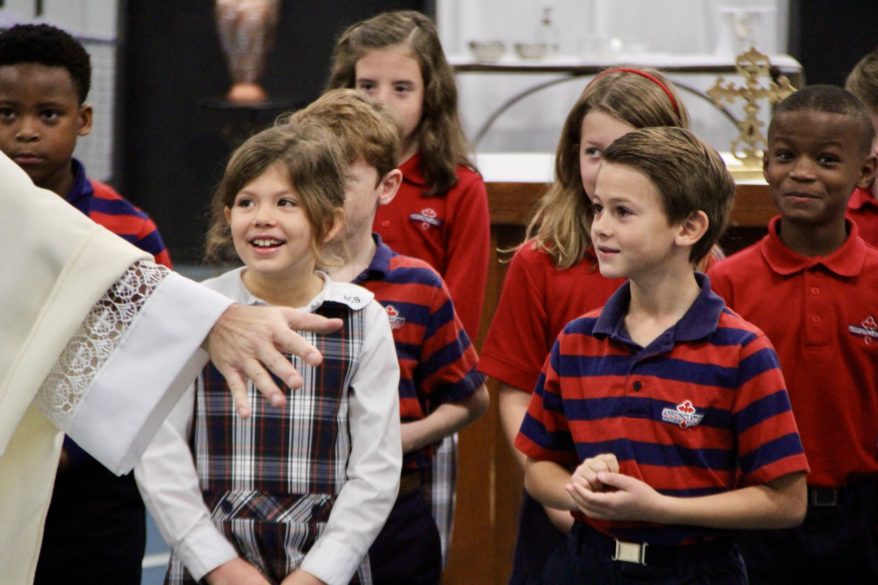
Jackson
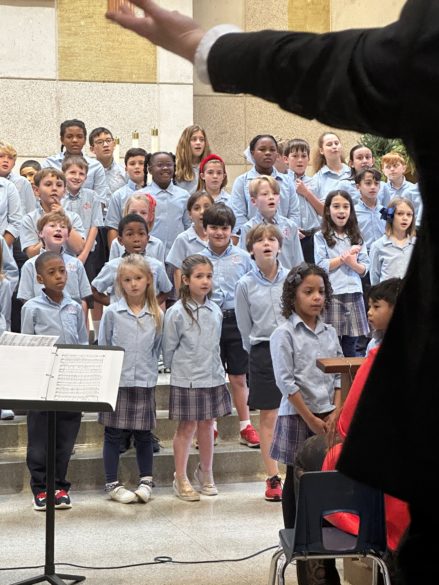
Serving Our Lady
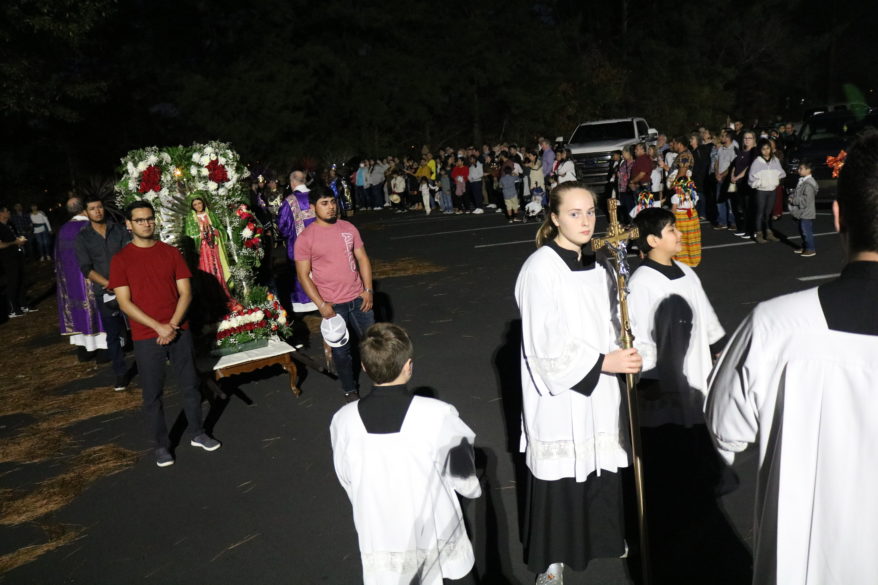
Principal serves with a smile


